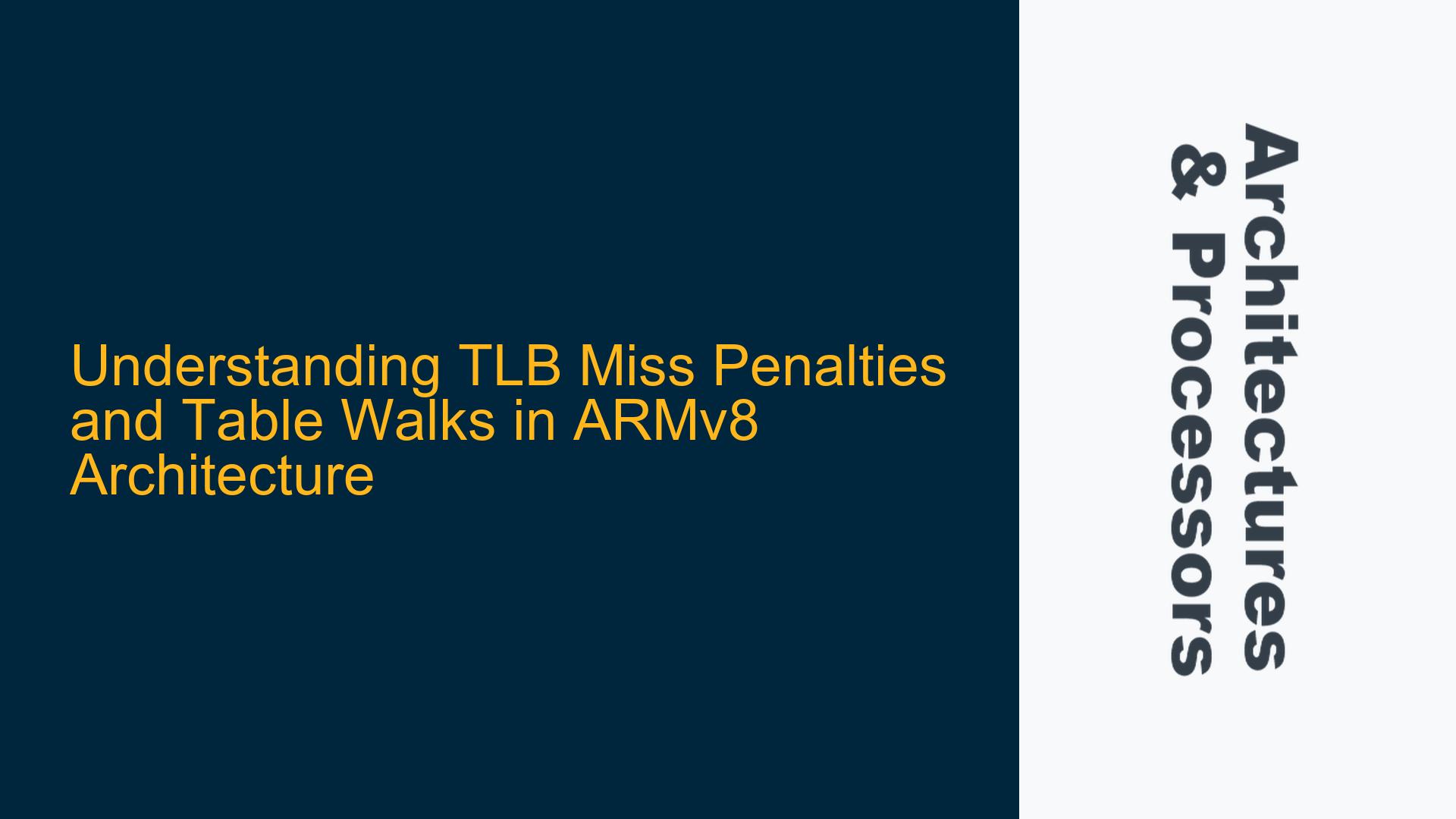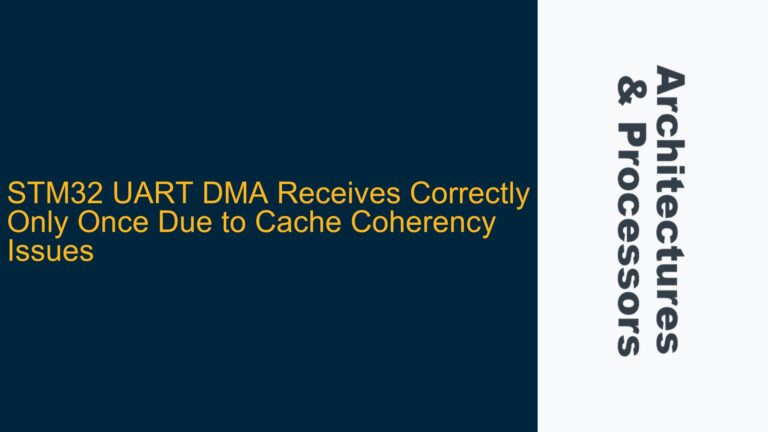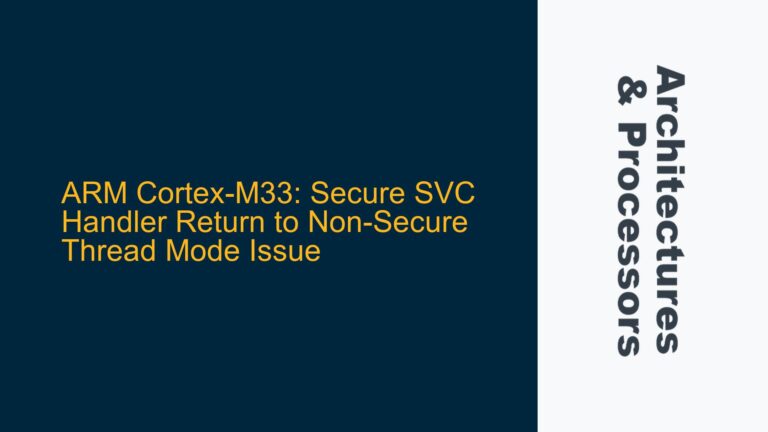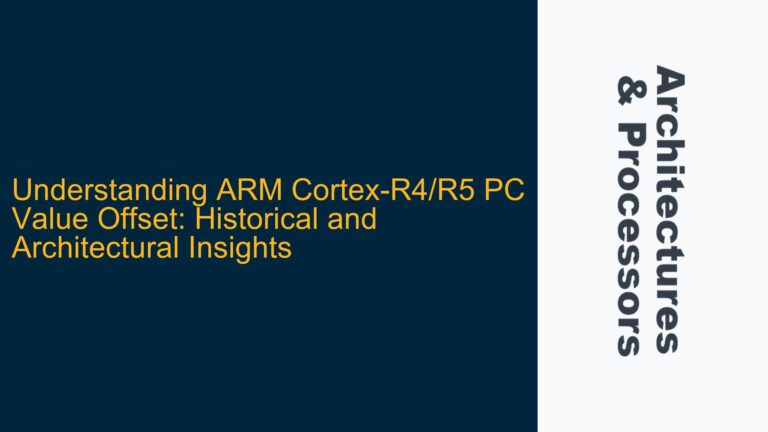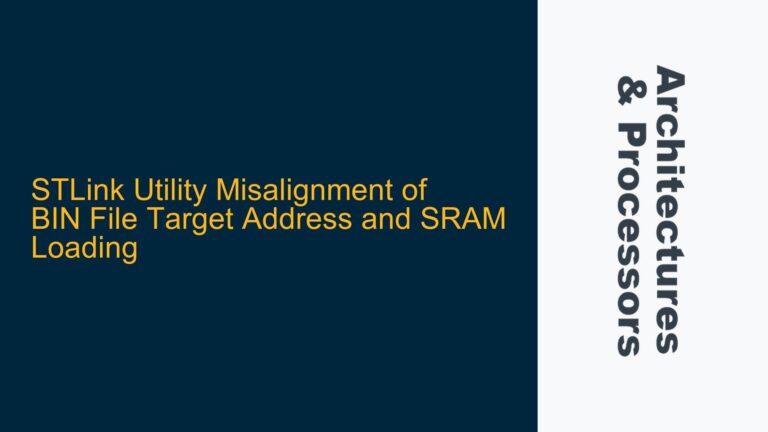ARMv8 TLB Miss Penalty and Table Walk Latency Overview
In ARMv8 architecture, the Translation Lookaside Buffer (TLB) is a critical component for virtual-to-physical address translation. When a TLB miss occurs, the processor must perform a table walk to retrieve the necessary translation information from the page tables stored in memory. This process introduces latency, which can significantly impact system performance, especially in applications with large memory footprints or high context-switching rates. The penalty for a TLB miss and the subsequent table walk depends on several factors, including the level of the page table hierarchy being accessed, the memory subsystem’s characteristics, and whether the page tables are cached in the L2 or L3 caches.
The ARMv8 architecture supports a multi-level page table structure, typically consisting of four levels: Level 0 (L0), Level 1 (L1), Level 2 (L2), and Level 3 (L3). Each level corresponds to a different granularity of memory mapping, with L0 covering the largest memory regions and L3 the smallest. The latency of a table walk increases with the depth of the page table hierarchy being traversed. For example, a miss at L0 may require accessing L1, L2, and L3 tables sequentially, resulting in a higher penalty compared to a miss at L3, which only requires accessing a single table.
The memory subsystem plays a crucial role in determining the latency of table walks. If the page tables are cached in the L2 or L3 cache, the latency can be significantly reduced compared to accessing them from main memory. However, if the page tables are not cached, each table walk will incur the full memory access latency, which can be several orders of magnitude higher than cache access times. Additionally, the memory controller’s efficiency, the DRAM type, and the memory bus bandwidth can all influence the overall latency of table walks.
Factors Influencing TLB Miss Penalty and Table Walk Deviation
Several factors contribute to the deviation in TLB miss penalties and table walk latencies in ARMv8 systems. One of the primary factors is the cacheability of the page tables. If the page tables are marked as cacheable, the processor can store them in the L2 or L3 cache, reducing the latency of subsequent table walks. However, if the page tables are not cacheable, each table walk will require accessing main memory, leading to higher and more variable latencies.
Another factor is the memory hierarchy and the distance between the processor and the memory. In systems with multiple levels of cache, the latency of accessing the page tables can vary depending on whether they are found in the L1, L2, or L3 cache. The farther the page tables are from the processor, the higher the latency. Additionally, the memory controller’s efficiency and the DRAM type (e.g., DDR3, DDR4, LPDDR4) can also impact the latency. For example, DDR4 memory typically has lower latency compared to DDR3, but this can vary depending on the specific memory controller implementation.
The size of the TLB and the page size also play a role in determining the TLB miss penalty. A larger TLB can hold more translations, reducing the likelihood of misses. Similarly, larger page sizes (e.g., 2MB or 1GB) can reduce the number of TLB entries required to map a given memory region, decreasing the chance of misses. However, larger page sizes can also lead to increased internal fragmentation and may not be suitable for all applications.
The workload characteristics can also influence the TLB miss penalty. Applications with large memory footprints or high rates of context switching are more likely to experience TLB misses, leading to higher penalties. Additionally, the access pattern to memory can affect the likelihood of TLB misses. For example, random access patterns are more likely to cause TLB misses compared to sequential access patterns.
Measuring and Mitigating TLB Miss Penalties in ARMv8 Systems
To measure TLB miss penalties and table walk latencies in ARMv8 systems, Performance Monitoring Units (PMUs) can be used. PMUs provide hardware counters that can track various performance metrics, including TLB misses and table walks. By configuring the PMU to count TLB misses and measuring the time taken for table walks, developers can estimate the penalty associated with TLB misses. Additionally, tools like the lmbench micro-benchmarks can be used to measure TLB miss penalties at the OS level, providing a higher-level view of the impact on system performance.
To mitigate the impact of TLB misses, several strategies can be employed. One approach is to optimize the memory access patterns to reduce the likelihood of TLB misses. For example, using larger page sizes can reduce the number of TLB entries required to map a given memory region, decreasing the chance of misses. However, this must be balanced against the potential for increased internal fragmentation.
Another strategy is to ensure that the page tables are cacheable, allowing the processor to store them in the L2 or L3 cache. This can significantly reduce the latency of table walks, especially in systems with high memory access rates. Additionally, using hardware features like the ARMv8 Translation Table Walk Coalescing (TTWC) can help reduce the number of table walks by coalescing multiple walks into a single access.
In systems where TLB misses are a significant performance bottleneck, using a larger TLB or a multi-level TLB can help reduce the miss rate. Some ARMv8 processors support configurable TLB sizes, allowing developers to trade off TLB size against other resources. Additionally, using software techniques like TLB prefetching or TLB shootdown optimization can help reduce the impact of TLB misses.
Finally, it is important to consider the overall system design when addressing TLB miss penalties. For example, using a memory hierarchy with multiple levels of cache can help reduce the latency of table walks by keeping the page tables closer to the processor. Additionally, optimizing the memory controller and DRAM configuration can help reduce the latency of memory accesses, further mitigating the impact of TLB misses.
In conclusion, TLB miss penalties and table walk latencies are critical factors in the performance of ARMv8 systems. By understanding the factors that influence these penalties and employing strategies to mitigate their impact, developers can optimize the performance of their systems and ensure efficient memory access.
